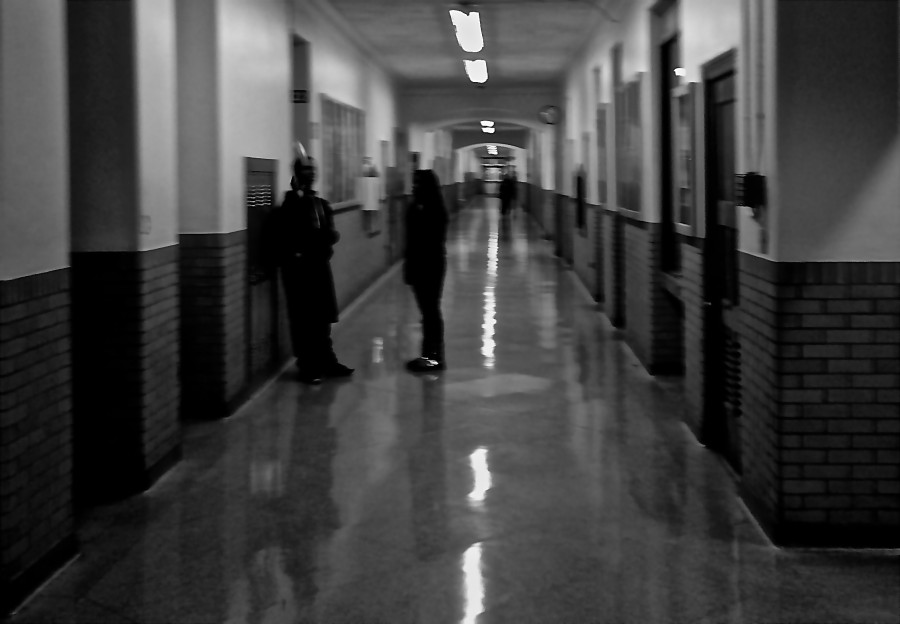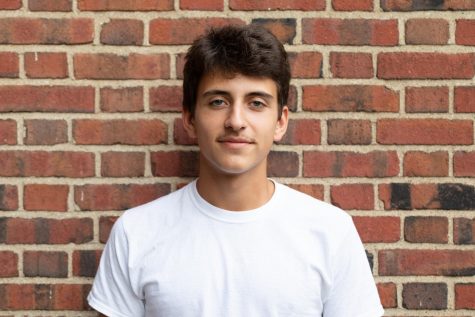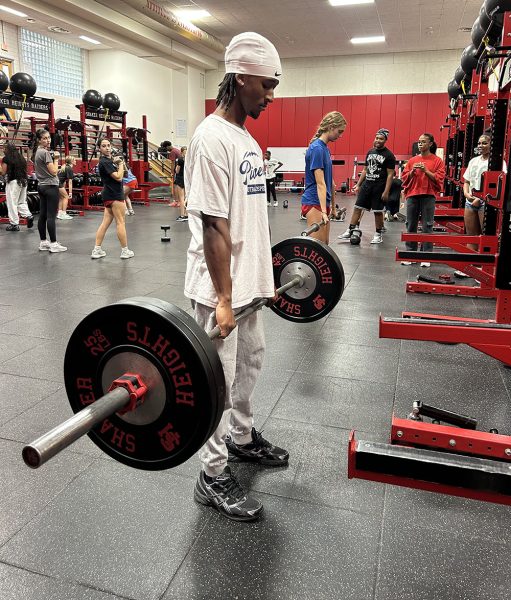More Than Just Crisis Communication Plans
The school threats last month resulted in an outcry about the districts communication failures, but there was little talk about the students who made the threats.
The halls of SHHS saw few students on Oct. 7, the day of the Instagram threat.
Many things went wrong on Oct. 7, the day an Instagram threat rattled our school.
Most of the conversation about the threats focused on the failures of that day (i.e. the school’s failed communication). But we can’t focus on just one day. These failures occurred over the lifetime of an isolated person. A lifetime, which led to one hurtful episode. This is about more than just crisis communication plans.
Threats have become an unfortunate, yet common way to express frustration and isolation in Shaker Heights and across America. To ignore the threats is to risk student lives; to accommodate them is to be held hostage. Through threats, a few misguided students can create waves of distrust, fear and anger that resonate throughout the community.
On Oct. 7, teachers were frustrated by miscommunication and loss of teaching time. Students were fearful because they didn’t know what was happening. The district lost parents’ trust by failing to communicate. Some of the blame fell on the perpetrator, the rest on problems that her actions revealed. These initial reactions were reasonable and proper. But the criminal justice response that followed both threats was not.
Barely three weeks later, on Oct. 30, we were confronted with another alarming threat. This one was written on a bench. The actions of the student that day seemed less menacing. Maybe it was because we didn’t read the words, or because the threat wasn’t broadcasted on a public platform. Maybe because the culprit was already in police custody. No matter, the response was still harsh.
When Interim Principal James Reed III told the school about that graffiti threat, he said they would pursue the “highest disciplinary consequence possible by the state of Ohio”; in other words: legal action and expulsion.
The legal term for threatening a school is “inducing panic.” According to the Ohio Revised Code, when “panic is induced” at a school, the charge is a second-degree felony; punishable by a maximum sentence of eight years in jail. The minimum is two.

The Shaker Heights Police Department sits on Lee Rd.
Jail time won’t help those looking for closure.
Restorative justice is the “a theory of justice that emphasizes repairing the harm caused by criminal behavior.” Here, the perpetrator would seek forgiveness through understanding. He or she would explain their actions to the community. They would show understanding of the consequences, and we as a community would be prepared to empathize. We would hold them accountable without punishment.
Through talking, we would learn what we, as a community and a nation, did that brought her to the tipping point. We would learn that she was lonely, maybe that she needed help. That we could be doing more to provide that help. That she was impacted by her surroundings, by the violent nature of our world.
The fact that people turn to threats and violence is a twenty-first-century disaster. The worst school violence of the 1800s was a child strangled to death over a dead sparrow. This year, 52 schools have been the victims of shootings. Nine people were shot and killed at Umpqua Community College on Oct. 1 before the shooter turned the gun on himself.
There are at least two sides to this problem. One is social: People thrive on the attention that threats and incidents bring. The other is systemic: We don’t provide enough guidance to those students who need it.
The two students who frightened us and disrupted school shouldn’t carry the full blame for their actions. Their actions were terrible, misleading and chilling. But they are not the only ones who should be held culpable.
Everyone shares a part in this breakdown.The administration doesn’t recognize the needs of all students, and officials fail to notice damaged individuals. This lack of attention to the individual and the change from preemptive guidance to punishment have all contributed to the increase in threats. School violence is now the punchline of jokes in lunchroom conversations. Police officers and security guards outnumber social workers and psychologists at our school, by a lot.
Some argue that “kids are… doing stupid things like making stupid threats.” While this is true, most 15-year-old girls don’t threaten that everyone will “have their heads blown up or die in an explosion” because of poor judgment — maybe they find it amusing — especially when the incident carries on throughout the day. They do it because they have emotional or even psychological issues. Unfortunately, according to the Youth Risk Behavior Survey, there is a 28.2 percent documented depression rate among students in the Inner East Ring suburb of Cleveland, second highest in Cuyahoga County. That means around 550 Shaker students reported being depressed at some time.
Tana Gadelsayed, the SAY social worker at the high school, said that 70 students were seen with symptoms of depression in the year of 2014-2015. That is less than 13 percent of the kids who report feeling depressed. Gadelsayed thinks this is because “many students are unsure of how to take the first step to reach out for help, and some may not think they are ready to tell someone.” She believes that in order to fix it, we must “let people know that it’s a strength to reach out for help when needed as it can be very difficult to do.”
The biggest problem is this: When a student threatens to blow off our heads, some of us fume and others celebrate the day off. Parents rant and lament about an inconclusive email or an inconsistent message, yet few focus on the fact that a broken child threatened to bring a shotgun to school and blow everyone up.
When this happens again, remember that it’s not because the last response wasn’t fierce enough or the security and police weren’t scary enough. It is because we promote and trivialize violence; because we scorn those who ask for help. It is because we failed to help the few students who needed it the most.





